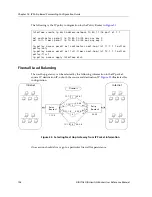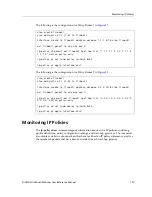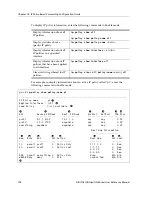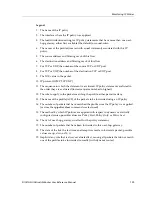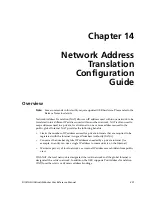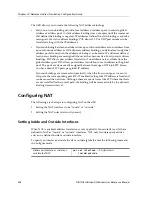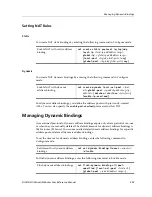
Chapter 13: IP Policy-Based Forwarding Configuration Guide
188
DIGITAL GIGAswitch/Router User Reference Manual
For example, you can set up an IP policy to send packets originating from a certain
network through a firewall, while letting other packets bypass the firewall. Using IP
policies, sites that have multiple Internet service providers can cause user groups to use
different ISPs. You can also create IP policies to select service providers based on various
traffic types.
Other uses for IP policy routing include transparent web caching, where all HTTP
requests are directed to a local cache server, saving WAN access bandwidth and costs. An
ISP can use policy-based routing on an access router to supply high-priority customers
with premium levels of service.
Configuring IP Policies
To implement an IP policy, you first create a profile for the packets to be forwarded using
an IP policy. For example, you can create a profile defined as “all telnet packets going from
network 9.1.0.0/16 to network 15.1.0.0/16”. You then associate the profile with an IP
policy. The IP policy specifies what to do with the packets that match the profile. For
example, you can create an IP policy that sends packets matching a given profile to next-
hop gateway 100.1.1.1.
Configuring an IP policy consists of the following tasks:
•
Defining a profile
•
Associating the profile with a policy
•
Applying the IP policy to an interface
Defining an ACL Profile
An ACL profile specifies the criteria packets must meet to be eligible for IP policy routing.
You define profiles with the
acl
command. For IP policy routing, the GSR uses the packet-
related information from the
acl
command and ignores the other fields.
For example, the following
acl
command creates a profile called “prof1” for telnet packets
going from network 9.1.1.5 to network 15.1.1.2:
See the
DIGITAL GIGAswitch/Router Command Line Interface Reference Manual
for complete
syntax information for the
acl
command.
Note:
ACLs for non-IP protocols cannot be used for IP policy routing.
gs/r(config)#
acl prof1 permit ip 9.1.0.0/16 15.1.0.0/16 any any telnet
0























